Book Review: The MVP Machine - Profiling Baseball's Nonconformists
by Fred Hofstetter on April 20, 2020Pick up The MVP Machine and brush up on what's happening in player development in MLB baseball. Prepare to hate or really like Trevor Bauer.
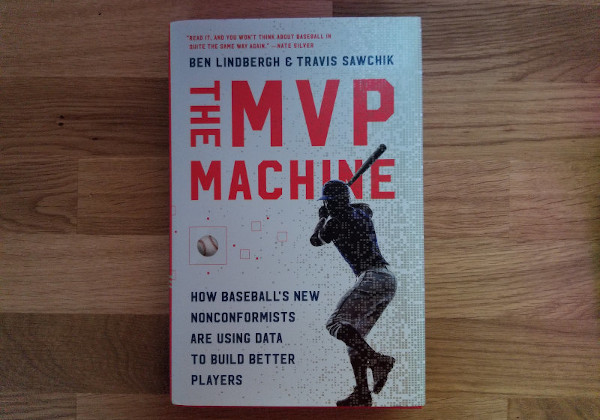
A peek at the state of the game and where it’s going.
The MVP Machine: How Baseball’s New Nonconformists are Using Better Data to Build Better Players

Want an introduction to the nonconformist innovators in MLB baseball in 2020? Here’s where to start.
Buy on AmazonDiscover how today's big leaguers are getting better.
In The MVP Machine’s prologue Trevor Bauer tests a new east-to-west pitch. Some kind of slider with less vertical drop. Bauer uses high-tech cameras to track exactly how the ball releases from his fingers at different arm angles to develop precisely the ball flight he’s looking for. He’s set up at Driveline Baseball in Seattle, using a described “jury-rigged” contraption to capture the frame-by-frame insight he’s after.
I golfed in high school. I remember the first time I took a video of my own swing, propping maybe the first digital camera manufactured for amateur use against the stairs on my parents’ back porch. I’d say “7 iron, 90%”—then take two 90% swings angled straight away from the camera, then two from the side. I still vividly remember the visceral feeling of disgust I had the first time I watched my own swing and instantly identified several of the dozens of warts.
Bauer undergoes the same process, though at a much higher level, with much better equipment—with an actual ability to adjust and improve.
And that’s the story of The MVP Machine. Players using information and working hard to get better. If Moneyball is about acquiring players who already hold underappreciated skills, The MVP Machine is about developing players you already have and maximize their abilities.
“Only a small subset of people needs to get great at baseball. But if experienced players in a centuries-old sport can be better than they thought, it suggests something exciting. Maybe we all have hidden talent. And maybe everyone can be better at whatever work they do.”
This book centers on Trevor Bauer and the Driveline Baseball instructional facility in Seattle owned by Kyle Boddy. Driveline is the example used as a prominent case study in the game’s movement toward player development. While Bauer is the spotlight throughout the book there are many baseball execs and players featured, including:
- Branch Rickey
- Erwing Kauffman
- Mookie Betts
- Marlon Byrd
- Justin Turner
- Rich Hill
- Brian Bannister
- Ryan Pressly
- Jeff Luhnow
- Francisco Lindor
- Jose Ramirez
- Craig Breslow
- Adam Ottavino
Lindbergh and Sawchik put a magnifying glass on the happenings over the past five years or so, but also provide a broader background by getting into some of the history about how teams have though about team and player development since the early 20th century.
“Qualities that once might have been turnoffs to jocks are now considered selling points: the presence of nerds, a laundry list of technological tools, and a promise to tinker with the way they play.”
There’s a lot spoken to classic identity rivalry between the old and new guards. But there’s nuance. This isn’t just about nerds taking over (again). The primary clash spoken to in The MVP Machine is the relationship between individual players with their own ideas about how to get better vs. the organizations that employ them. Teams aren’t always supportive, and it’s surprising how often players will go outside the organization to seek help. It can ruffle some feathers.
Using data to build better players.
That’s the central theme of the book. I’d guess the authors would say this isn’t just for the nerd readers, but…this one’s probably for the nerd readers.
A small favorite part.
Chapter 4 features a profile of Kyle Boddy, owner of the Driveline facility square at the center of the narrative in The MVP Machine. He’s a colorful character. I love the imagery here:
“Boddy has a radical suggestion for how we should teach children intent. ‘Don’t ever play catch with a six-year-old,’ he says. ‘I’d put my kid by a fence, and I’d throw the shit out of the ball into the fence, like as hard as possible.’ That way, Boddy says, the child will learn and mimic an adult’s max-intent mechanics. Kids copy the adults they’re around, Boddy notes. Boddy’s theory on why the children of major leaguers succeed at such a high rate is not so much genetics – which doesn’t hurt – but because they’ve emulated more effective throwing and movement patterns. If you play catch, lightly, at low intent, kids learn the wrong motion, he says. ‘[Then]’ you yell at them at age twelve when they’re not athletic,’ Boddy says. ‘But you just spent six years teaching them how to throw like an idiot, so what do you expect?’”
Some unfortunate timing.
There’s a chapter devoted entirely to the Astros’ ascent in the mid 2010s, which is curious to read in retrospect given when was revealed in early 2020 about their bold cheating scheme (read more about if MLB’s punishment goes far enough). You’ll grimace your way through this bit. Obviously at no fault to the authors – The MVP Machine was published in 2019, just 6 months or so before Mike Fiers blew the whistle.
Can’t help but chuckle at this kind of stuff:
“It would take a lot to puncture the pipeline Houston has in place.”
Oof.
Although it is curious how Sawchik/Lindbergh round off the summary of the Astros’ success hinting that things weren’t going all that well internally, citing low morale and high turnover after their World Series victory. Rumors and suspicion of their sign-stealing shenanigans certainly circled in MLB offices prior to their revelation in 2020. You wonder about how much that could have impacted the fractured state of the Astros’ organization as detailed in this book.
Summary.
Both Lindbergh and Sawchik are accomplished, elegant writers who succinctly capture a multifaceted movement in MLB baseball into a 300+ page book. The MVP Machine portrays the present state of the game and sets the stage for years to come.
If you haven’t already read this book it’s time you do so. A must-read for 2020.

The latest articles
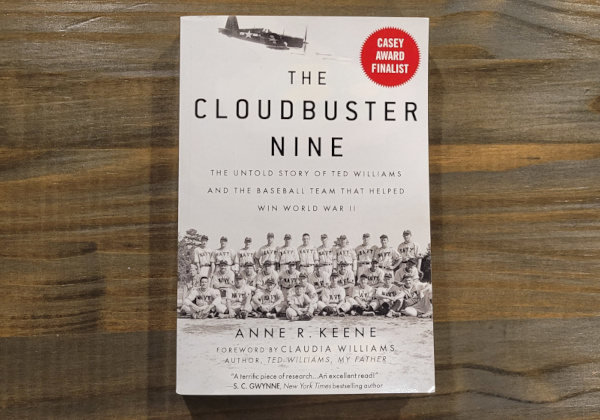
Book Review: The Cloudbuster Nine - by Anne R. Keene
by Fred Hofstetter on January 30, 2024Keene's comprehensive book tells several stories behind the V-5 Pre-Flight School in Chapel Hill, North Carolina: home to one of the rarest, greatest baseball teams in American history.
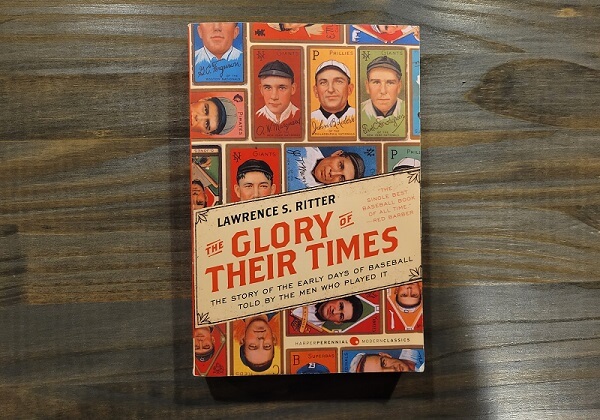
Book Review: The Glory of Their Times
by Fred Hofstetter on February 11, 2023There's good reason why The Glory of Their Times appears on every "best baseball book of all time" list you'll find anywhere.
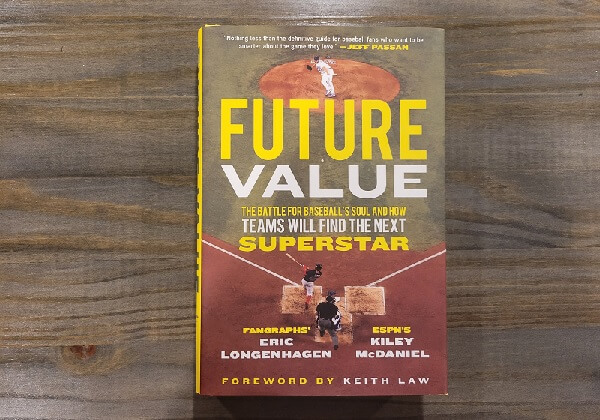
Book Review: Future Value - Eric Longenhagen & Kiley McDaniel
by Fred Hofstetter on January 8, 2023Discover how amateur and pro baseball scouting is done, how departments are built, and how organizations find talent in Future Value.
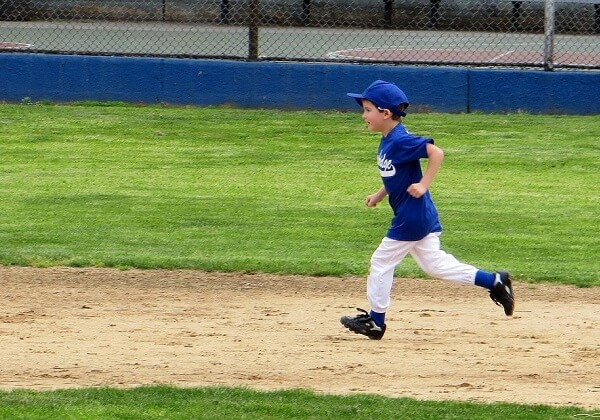
Baseball players wear hats because wearing a hat is correct
by Fred Hofstetter on April 9, 2022Practicality explains why baseball players may want to wear a billed cap. But why does every player always wear a hat? Because it’s the right thing to do.
